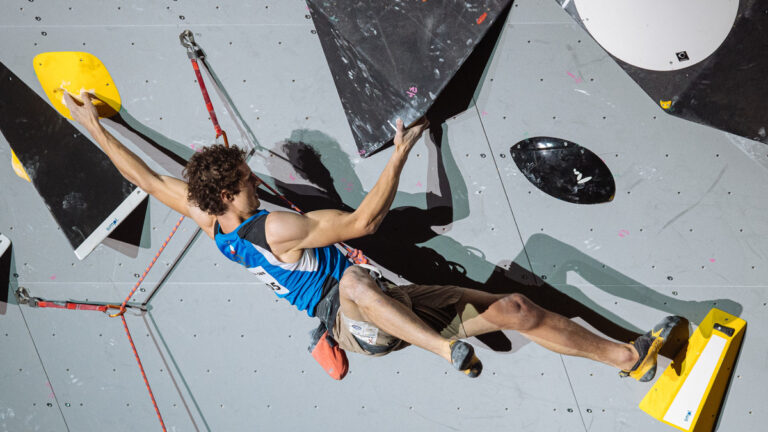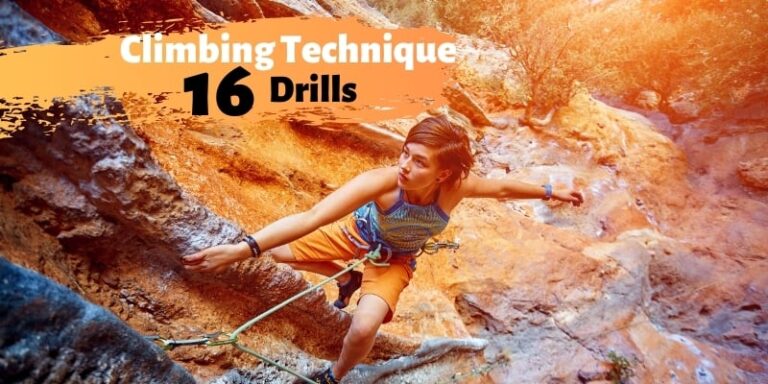Why You Should Not Walk in Climbing Shoes(Complete Guide)
It is an interesting debate! Why you shouldn’t walk in climbing shoes. Climbing shoes are specially designed to help climbers perform their best and have a strong grip on tough climbing paths. These shoes have a close and comfortable fit, a rubber sole with excellent grip, and a curved shape to improve accuracy and concentrate the weight towards the center.
Climbing shoes have a unique design and a tight fit, which makes them uncomfortable for walking. Walking in them occasionally is okay, but using them regularly can shorten their life span. In order to maintain good performance and safety, it is best to avoid walking in climbing shoes as much as possible.
Reason to Avoid Climbing Shoes in Walking
Following are the Negative Aspects of Walking in Climbing Shoes
Uncomfortable Fit
The first pair of your climbing shoes may be uncomfortable for daily use. The tight fit can cause discomfort when walking, creating pressure points and pain. Prolonged walking in climbing shoes can compromise comfort, reduce blood circulation, and restrict natural foot movements leading to foot issues. However, this tight fit is essential for better climbing performance. Taking off the shoes when you’re not climbing is important for giving your feet a break. Your feet will love it!
Reduce Lifespan
Climbing shoes are designed uniquely to enhance performance on climbing surfaces like rocks, and indoor and artificial walls. The rubber sole of these shoes has an excellent grip that allows climbers to find and keep footholds more effectively. The curved shape of the shoe helps in precise edging and smearing techniques.
Using climbing shoes regularly can wear out the rubber sole, which may need to be replaced with a new one or a resole. However, the rubber sole doesn’t wear out as quickly as when walking outdoors.
Shape Deformation
The downturned shape of climbing shoes is best for tackling steep overhangs during climbing but is not comfortable for walking. Using your climbing shoes for walking can cause damage and lead to losing the benefits they offer during climbing. The shoe is not designed to handle the forces generated by walking or standing. It results in the rubber sole flattening and changing shape due to the pressure applied during walking.
The constant walking can cause the shoe to stretch out and lose the stitches due to the outward force of the foot. The downturned shape of the shoe can become deformed by walking, and the rubber soles become soft. Even if you get a resole (replacing the rubber sole), it won’t fully restore the shoe’s original climbing performance. It is essential to avoid using climbing shoes for walking to preserve their specialized design and ensure they perform best during climbs.
Reduce Breathability
Walking in climbing shoes increases foot sweat and unpleasant odors. To ensure the comfort of your feet and prevent unpleasant odors, it is better to avoid climbing shoes for walking. Limit their use for climbing activities only to maximize their lifespan. Investing in a quality pair of climbing shoes and using them exclusively for climbing will help them perform better and last longer. So, it is a good idea to avoid them walking and preserve their condition for climbing.
Environmental Considerations
Walking in climbing shoes can harm the environment. The sticky rubber in climbing shoes is best for gripping rocks during climbs, but it can cause unnecessary erosion on other surfaces. In order to protect and maintain natural outdoor areas, it is essential to use appropriate footwear suitable for walking on various outdoor surfaces. Choosing the right shoes for each activity can reduce environmental damage and protect our natural surroundings while enjoying outdoor activities.
Breaking-in Climbing shoes
Breaking in climbing shoes is essential to improve their comfort and performance. New climbing shoes often have a tight and stiff fit, which can be uncomfortable and affect your climbing ability. Taking the time to break them in properly is important, and each pair may have its unique break-in period.
Here are some tips to follow while breaking into your climbing shoes:
- Wear them around the house for short periods to gradually get used to the fit.
- Perform gentle stretching to reduce pressure points and make them more comfortable.
- Use a plastic bag filled with water inserted into the shoe or freeze the shoe overnight to help stretch it slightly.
- Climb in the gym for shorter sessions to break them in further.
- Choose moderate climbs when using them outdoors to continue the breaking-in process.
If you still experience discomfort, wear thin socks with your climbing shoes to add extra padding and reduce friction. Following these tips will help you optimize the comfort and performance of your climbing shoes without damaging them.
Proper Use of Climbing shoes
Climbing shoes are essential for climbers, but using them correctly is equally important. Here are some tips to make the most of your climbing shoes:
- Comfort and security are equally important when choosing climbing shoes.
- Remember that climbing shoes may stretch over time, so choose a size that accommodates this without sacrificing performance.
- To put on climbing shoes, loosen the laces or straps. Slide your toes into the shoe and gradually pull the heel up and over your heel. Ensure the shoe aligns correctly with your foot.
- Tighten your shoe from the bottom and work your way up, making sure each part fits tightly. Adjust the laces or straps to your comfort level.
- Focus on placing your toes on small footholds and edges to maximize grip and stability.
- Engage your toes and use the rubber on the shoe’s sole to find a track on the rock.
- Try to minimize walking in climbing shoes to avoid unnecessary wear and tear.
- Carry comfortable shoes or sandals for walking between climbs or during breaks.
- Store your climbing shoes in a cool, dry area away from direct sunlight.
- Avoid compressing or placing heavy objects on them, as this can deform the shoes over time.
- Never wear climbing shoes to the bathroom to avoid contamination from germs.
- Gently clean the surface using a soft brush and mild soap.
- Check your shoes for signs of wear, such as a worn-out rubber sole or damaged stitching. If you notice wear, have them resolved by a professional cobbler to extend their lifespan and performance.
Conclusion
Climbing shoes are designed to perform best in climbing activities but are uncomfortable for walking or hiking. Using them for these purposes can lead to discomfort, reduced performance, decreased durability, safety risks, and potential environmental harm.
To address any foot-related issues caused by climbing shoes, it is important to regularly wash your feet and use foot powders or anti-odor sprays to keep them fresh and comfortable. It will help maintain foot hygiene and overall comfort when using climbing shoes for their intended purpose.
Level up your climbing with top-notch shoes, reach new heights on the rock, and get your pair now!








Quality posts is the main to attract the people to pay a quick visit the web
page, that’s what this site is providing.
Thankyou gold ira 🙂